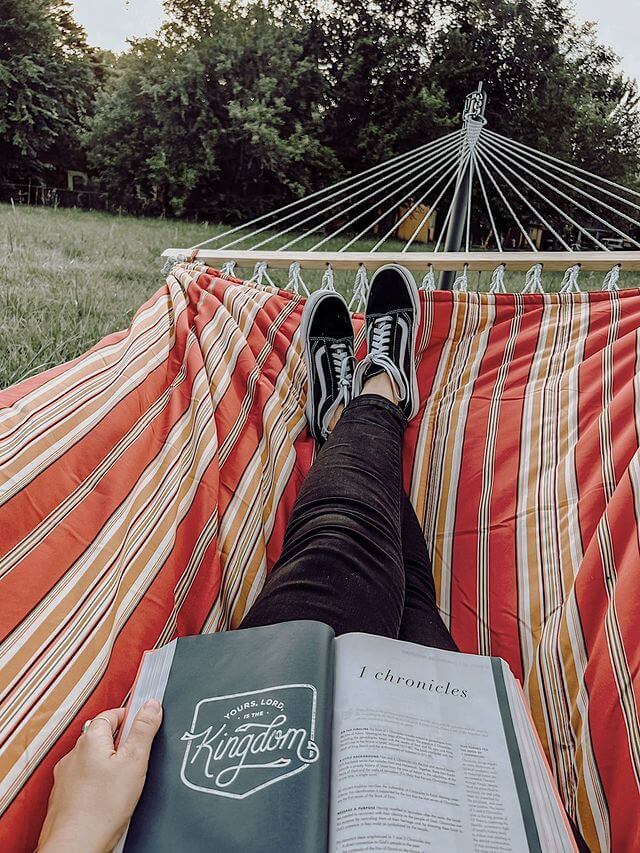
SUNCREAT - July 11 2022
#What We Create: Blaze Family
Blaze family, known as @ourfamilyadventures on Instagram with over 100,000 followers, loved and have traveled the world with many memories. We were excited to know their colorful experience and opinions about travel and outdoor activities!
Here's our interview:
Hi, we've followed you on social media, but please introduce yourself to everyone, especially new friends.
We are the Blaze family! I’m Tiffany, and my husband is Jacob. We have 3 kids: Taylor (23), Ocea (7), and Cedar (5). We typically travel 4-5 months of the year, but our home base is in Franklin, TN.

What countries and cities have you been to? Which place do you like best and why?
As of this month, we have been to 48 states with our two littles. We just took them to Minnesota, and we loved it so much we are already planning our next trip back. My husband and I have been to several countries individually, but we’ve taken the little ones to Canada, Iceland, and Mexico so far. We are dying to get them to Ireland because that’s been our absolute favorite.

What made you want to take a camera to record your life and post them on social media?
I naturally love taking videos of my kids to have when they’re older. Combine that with a love of photography, and that’s how we ended up here. It’s also been really fun to share our story and remind others that it is possible to travel with kids. It’s actually super enjoyable!

What does outdoor life mean to you? What is the most memorable time you spent outdoors?
We believe an outdoor life is a life well-lived. From the fresh air to the scenic views, it’s a perfect place for our children to explore God’s creation. I’d have to say one of our most memorable days would be the day we took a boat out on Lake Powell. I remember our whole family being in awe the entire time.

SUNCREAT - July 29th 2023
The Ultimate Tips for Eco-Friendly Hammock Camping
Camping is a beloved activity that allows people to escape the hustle and bustle of daily life and connect with nature. While traditional tents and sleeping bags are popular choices, hammock camping has emerged as a fantastic alternative. However, it's essential to recognize that camping, even in hammocks, can have environmental impacts. In this article, we will explore the ultimate tips for reducing the environmental footprint during hammock camping.
1.Plan Ahead and Prepare
Thorough planning and preparation are vital steps to ensure a successful and eco-friendly hammock camping experience. Here are some specific tips to help you plan ahead and prepare for your adventure:
(1). Research and Familiarize:
Before heading out on your hammock camping trip, research the camping site thoroughly. Check if permits or reservations are required and familiarize yourself with any rules or restrictions in place. Understanding the local ecosystem and terrain will help you make responsible decisions during your stay.
(2). Pack Sustainable Food and Water:
Opt for sustainable and eco-friendly food options when planning your meals. Choose locally sourced, organic, and minimally packaged foods to reduce waste. Pack reusable containers and utensils to avoid single-use plastics and excess packaging. Additionally, bring a refillable water bottle to minimize the need for disposable water bottles.
2.Choose an Eco-Friendly Hammock
Choosing an eco-friendly hammock is a crucial step towards minimizing your environmental impact during camping. Here are specific tips to help you select the most sustainable and responsible hammock for your outdoor adventures.
(1). Sustainable Materials:
Look for hammocks made from sustainable materials such as bamboo, hemp, or organic cotton. These natural fibers have a lower carbon footprint compared to synthetic materials like nylon or polyester. Sustainable materials are biodegradable and renewable, making them a more environmentally conscious choice.
(2). Recycled Materials:
Another eco-friendly option is to choose a hammock made from recycled materials. Some manufacturers create hammocks using recycled plastic bottles or other upcycled materials, reducing the demand for new resources and diverting waste from landfills.
(3). Size and Weight:
Consider the size and weight of the hammock, as lighter and more compact options are generally more eco-friendly. A smaller and lighter hammock requires fewer raw materials during production and is easier to transport, reducing carbon emissions during shipping.
(4). Durability:
Invest in a high-quality, durable hammock that will withstand regular use over an extended period. A long-lasting hammock means fewer replacements and less waste, making it a sustainable choice in the long run.
(5). Support Eco-Friendly Brands:
Support brands that prioritize sustainability and environmental conservation. By choosing eco-friendly hammock manufacturers, you contribute to the promotion of greener outdoor gear and encourage other companies to follow suit.
3.Mindful Hammock Setup
Setting up your hammock with mindfulness and care is essential to minimize your impact on the environment.
(1). Choose Established Campsites:
Whenever possible, select established campsites rather than creating new ones. Established campsites have already undergone some level of impact, and setting up your hammock in these areas helps minimize further disruption to the surrounding environment.
(2). Avoid Delicate Terrain:
Avoid camping in delicate or sensitive terrain, such as fragile meadows, wetlands, or areas with endangered plant species. These areas are vital for maintaining biodiversity and ecosystem health, and trampling on them can cause long-term damage.
(3). Follow Leave No Trace Principles:
Adhere to the principles of Leave No Trace (LNT) when selecting your hammock setup location. Leave No Trace encourages campers to minimize their impact on the environment by respecting wildlife, vegetation, and natural features.
(4). Check for Wildlife Habitat:
Before setting up your hammock, scan the surrounding area for signs of wildlife habitat, such as nesting sites or burrows. Avoid hanging your hammock directly over these areas to prevent disturbing or displacing wildlife.
4. Utilize Professional Accessories
Properly equipping your hammock with eco-friendly accessories is vital to safeguard the trees and surrounding environment. Here are specific tips on using professional accessories for a responsible and tree-friendly hammock setup:
(1). Eco-Friendly Tree Straps:
Instead of using ropes or cords, opt for eco-friendly tree straps specifically designed for hammock camping. These straps are wide, flat, and made from materials that are gentle on tree bark. They distribute the weight evenly, reducing the risk of damaging the trees during setup.
(2). Avoid Screws and Nails:
Never use screws, nails, or other hardware to attach your hammock to the trees. Hammering nails into the tree bark can cause wounds that inhibit nutrient absorption and lead to long-term harm. Using screws or nails can also introduce pathogens and pests, further compromising the tree's health.
(3). Use Tree-Friendly Suspension Systems:
Invest in tree-friendly suspension systems that are specifically designed to protect trees while supporting your hammock. These suspension systems often come with webbing or straps that wrap around the tree without causing damage.
(4). Learn Proper Hanging Techniques:
Familiarize yourself with proper hanging techniques, such as the "30-degree hang," which minimizes stress on the hammock and trees. Tying the hammock at an appropriate angle helps prevent excessive pressure on tree attachments.
(5). Check for Tree Health:
Before attaching your hammock, inspect the trees for signs of disease, damage, or stress. Avoid setting up on trees that are weak, decaying, or showing signs of injury to protect their well-being.
5. Proper Waste Management
Ensure responsible waste management during your hammock camping trip. Minimize waste generation and properly dispose of garbage, wastewater, and other waste materials. Commit to carrying all trash back home or to appropriate recycling facilities to leave the campsite pristine.
You'll be wondering if there's a hammock that fits all of these descriptions perfectly. Of course! Highly recommend SUNCREAT Double Hammock with Curved Bamboo Spreader Bar, which is ideal for eco-friendly hammock camping.
In conclusion, eco-friendly hammock camping is not only about enjoying nature but also about being responsible stewards of the environment. By following these ultimate tips, you can minimize your ecological footprint, protect the wilderness, and ensure that future generations can continue to experience the beauty of the great outdoors. Let's embrace sustainable practices and make a difference as we embark on our hammock camping adventures. Happy eco-friendly camping!
Related Posts

When was your last backyard makeover? What updates did you make?
We are actually working on that now since we recently moved. I love creating an inviting space that says, “Psst, it’s more fun out here than inside.” I want my family and friends to want to hang outdoors when they visit.

What originally made you want a hammock? Why did you finally choose SUNCREAT?
I really enjoy snuggling up with the kids and reading books to them. We also love finding shapes and pictures in the clouds. It’s one of my favorite memories from my childhood, and I want to share that experience with them. I did some research on hammocks and loved the SUNCREAT’s reviews and styles. We are loving our hammock and so happy with our choice.

When do you find yourself using the hammock most often? Weekend or weekday? At your leisure or after a busy day?
Our absolute favorite time to lie in the hammock is just before dinner time. I take each child out individually for a one-on-one, and we lie in in it searching the clouds and chatting about their favorite part of the day. They almost always say, “right now.”









